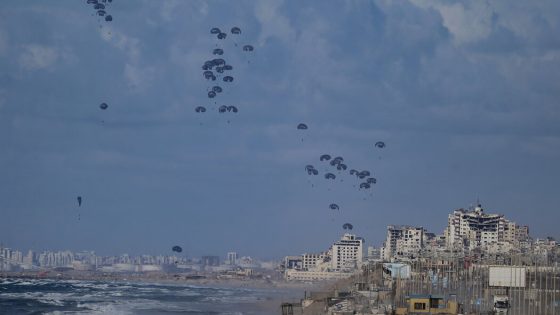U.N. officials, aid groups and experts on humanitarian crises have said the airdrops are insufficient and largely symbolic, given the dire needs of the two million Gazans still trapped in a war zone. They have urged Israel to open up more border crossings and to speed up inspections of the aid shipments.
Airdrops can only deliver a fraction of the food a convoy of trucks can haul, and it is difficult if not impossible to control who takes possession of the goods once they reach the ground, these experts have said.
But dangers posed by failed parachutes and falling pallets of food, water and other aid are also a major risk in airdrop operations. In its statement, the government press office cited the deaths as it argued Israel should open up more border crossings to let more truckloads of aid in.
Saleh Eid, a 60-year-old translator, said in a telephone interview on Friday that he had previously seen packages airdropped in north Gaza fall “very fast” when their parachutes failed to open, creating a risk to people’s lives.
Mr. Eid, who lives in the city of Jabaliya just north of Gaza City, said that many of these packages have fallen into the sea. Others have dropped into open areas near the border with Israel, and people have risked being shot by Israeli forces to retrieve them, he said.
Mr. Eid said that much of the airdropped food ends up being sold on the black market rather than being distributed to the most hungry.
On Sunday, he said, he bought three bags of food at a market that had been airdropped by the United States. He gave the food to his wife, who is nursing their 2-week-old baby, in the hope that she could eat well enough to produce milk.
Each of the bags, he said, cost him 30 shekels, or about $8 dollars, and contained a small meal and some biscuits, jam, peanut butter, a bar of chocolate, a juice box, instant coffee and gum.
Arijeta Lajka contributed reporting.
Source Agencies




